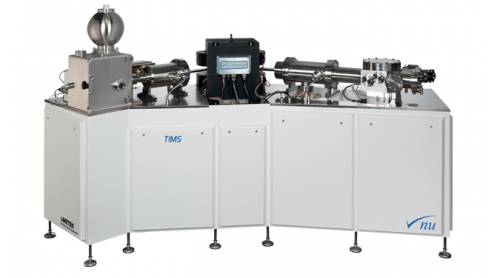Thermal Ionization Mass Spectrometry (TIMS)
Thermal Ionisation Mass Spectrometry (TIMS) uses temperature to thermally ionise a solid sample for isotopic analysis. This is achieved by passing a current through a conducting metal filament, on which the sample is on, to temperatures often exceeding 1000°C. Single or double heated filaments of varying materials can be used, dependent on the element to be isotopically analysed.
TIMS double filament technique is used to analyse samples that evaporate at a lower temperature to that at which they ionise.
The ions that are formed are accelerated by a high voltage (up to 8000V) to pass through a magnetic sector analyser where they are separated by mass to charge ratio. Each separated isotope beam is collected simultaneously in an array of detectors and the isotope ratios can be calculated from the relative intensities.
TIMS is utilised around the world for isotopic analysis of elements such as Neodymium and Strontium in the geological field and Uranium for Nuclear applications such as safeguards. TIMS is also the preferred isotopic analysis technique for elements such as Osmium and Calcium, which are difficult to isotopically measure on other instruments such as ICP-MS.


